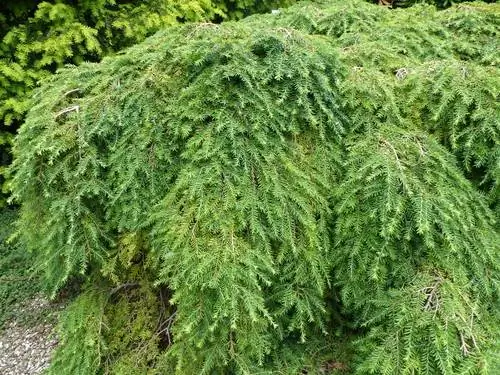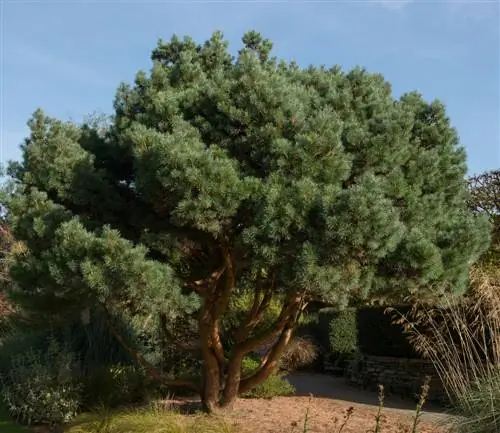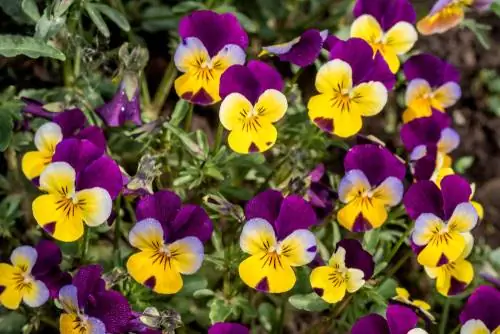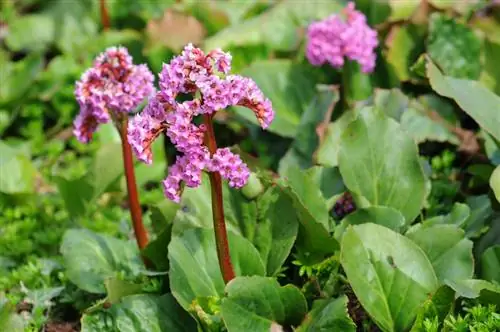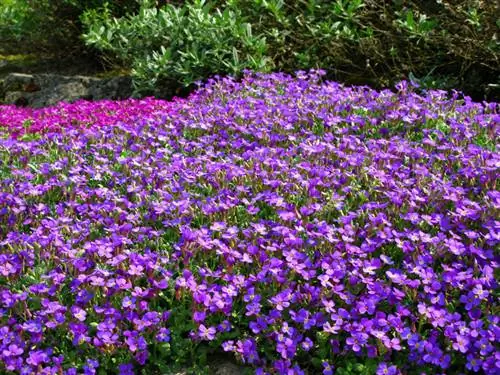- Author admin [email protected].
- Public 2024-01-10 23:11.
- Last modified 2025-01-23 11:22.
The hemlock combines a majestic stature with a dense dress of delicate needles. Since the evergreen tree is reliably cut-resistant, it is up to the gardener to decide whether it reaches its final height of 20 meters. It is precisely this pruning tolerance that makes the ornamental tree the ideal candidate for a magnificent privacy hedge. Read the answers to frequently asked questions about care and plants here.
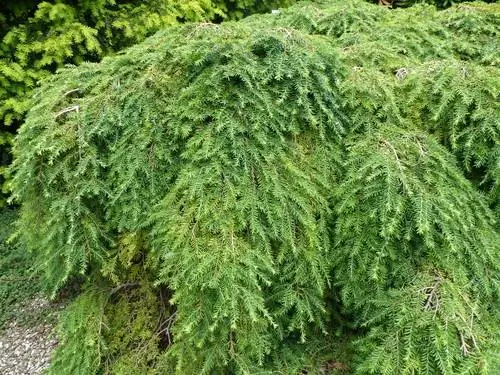
How do I properly care for a hemlock?
The hemlock is an evergreen tree that is suitable as a privacy hedge. It prefers partially shaded, wind-protected locations and slightly acidic, lime-poor soils. It should be watered and fertilized regularly during the growing season. Hardy care means, especially for young trees, protection from intense winter sun and frost.
Planting hemlock correctly
Choose a partially shaded, wind-protected location in the garden to plant the hemlock in autumn. Loosen the soil with a rake or tiller to remove stones, roots and weeds. Dig a planting pit with twice the volume of the root ball. Spread a 5-10 cm thick layer of sand on the sole as effective drainage against waterlogging. Enrich the excavation with acidic leaf compost and horn shavings (€52.00 on Amazon). Following the soil preparation, the actual planting process is child's play:
- Unpot the young tree and place it in the middle of the pit so deep that the ball and the ground are flush
- While a helping hand holds the trunk, drive in a support post next to the bale
- Now fill the planting hole with the substrate, tamp down and water with soft water
A planting cut promotes further branching. Cut off all shoots by a third. Finally, mulch the root disc with leaves or leaf mold.
Care tips
You will direct the growth of a hemlock in the right direction if you follow this care program:
- Keep the soil evenly moist, without fluctuations towards drought stress or waterlogging
- From March to September, fertilize every 3-4 weeks with acidic leaf compost or conifer fertilizer
- Extensive pruning and thinning in early spring, before fresh shoots
- Cut the hedges a little again around St. John's Day (June 24th)
- If possible, avoid cutting hemlock trees into old wood
Light winter protection is useful for young trees in the planting year. Established hemlocks suffer from intense winter sun, so protection from reed mats is advisable. If winter comes with frost, water the conifer on mild days.read more
Which location is suitable?
In a sunny to partially shaded location, the hemlock will not disappoint your expectations. Since it is a shallow-rooted tree, the tree is threatened by wind when it is young. A wind-protected location is therefore ideal. The coniferous tree is completely happy when it finds fresh, moist, loamy-sandy, slightly acidic and low-lime soil.
What soil does the plant need?
Since the hemlock reacts sensitively to drought and lime, the most important criteria for the condition of the soil are fixed. A humus-rich, deep and fresh, moist soil brings out the best in the majestic tree. In the best case, the soil has a slightly acidic pH value of 5.5 to 6.8, as you know from native fir trees.
Cut hemlock correctly
Cut a solitaire back at least once a year so that the sun can reach all regions of the crown. A frost-free day in January/February is ideal. However, do not cut into the old wood, as the conifer will find it difficult to produce new growth. If the hemlock has developed more than one base shoot, cut off the weaker ones close to the ground.
Cultivated as a hedge, cut the hemlock in early spring and again around St. John's Day. While winter pruning can be carried out more extensively, in summer limit yourself to the nose-shaped green shoots in order to maintain a well-groomed appearance. A trapezoidal shape with a wide base that tapers towards the top is advantageous. This shape makes an important contribution to preventing aging from within.read more
Watering hemlocks
The linchpin of successful care is the continuous supply of water all year round. If a hemlock comes under drought stress, it will quickly shed its needles. This is also how it reacts to waterlogging. Therefore, check the moisture content of the soil using a thumb test so that you can water with soft water if the surface is dry.
Fertilize hemlock trees properly
A balanced nutrient supply sets the course for a long tree life. Fertilize the hemlock every 3-4 weeks during the growing season with acidic leaf or coniferous compost, supplemented with horn shavings. Alternatively, you can use a conifer fertilizer, which must be dosed according to the manufacturer's instructions. It is important to ensure that you water sufficiently after each fertilization.
Wintering
The hemlock is well hardy, so no measures need to be taken before the first frost. An exception are young trees in the year of planting, as winter hardiness is not yet fully developed. Adult hemlocks suffer from intense winter sun and frost. This is how you properly overwinter your ornamental trees:
- In the year of planting, pile up the root disc thickly with autumn leaves, secured with needle twigs
- In the first winter, put on a breathable hood made of fleece
- Protect adult hemlock firs from the blazing winter sun with reed mats
In dry winter weather, bitter frost and plenty of sun, the fir tree suffers from drought stress within a short period of time. Therefore, water with soft water on mild days.
Propagate hemlocks
As is typical for conifers, propagation is slow and represents a horticultural challenge that can last for years. The seeds are cold germinators and must be subjected to stratification. To do this, place the seeds in a bag with moist sand in the vegetable compartment of the refrigerator for 6-8 weeks or place the seed container on the winter balcony. Then sow the seeds and keep the substrate constantly moist in a partially shaded, protected location. On average, after 4 years you will have a vital young plant in your hands that can be planted out.
How do I transplant correctly?
In the first 5 years of life, a hemlock can be transplanted without any problems. Start the work in spring or autumn by cutting off the roots all around with a spade. The radius should be two thirds of the current height. Lift the root ball out of the ground so that as much soil as possible remains attached to it. The main requirements for successful rooting in a new place are maintaining the previous planting depth and an adequate water supply.
Is hemlock poisonous?
Don't let the middle name Hemlock confuse you. In fact, the hemlock is one of the few pine plants that does not contain any toxic ingredients. The tree is therefore recommended as an ideal house tree for the family garden.read more

